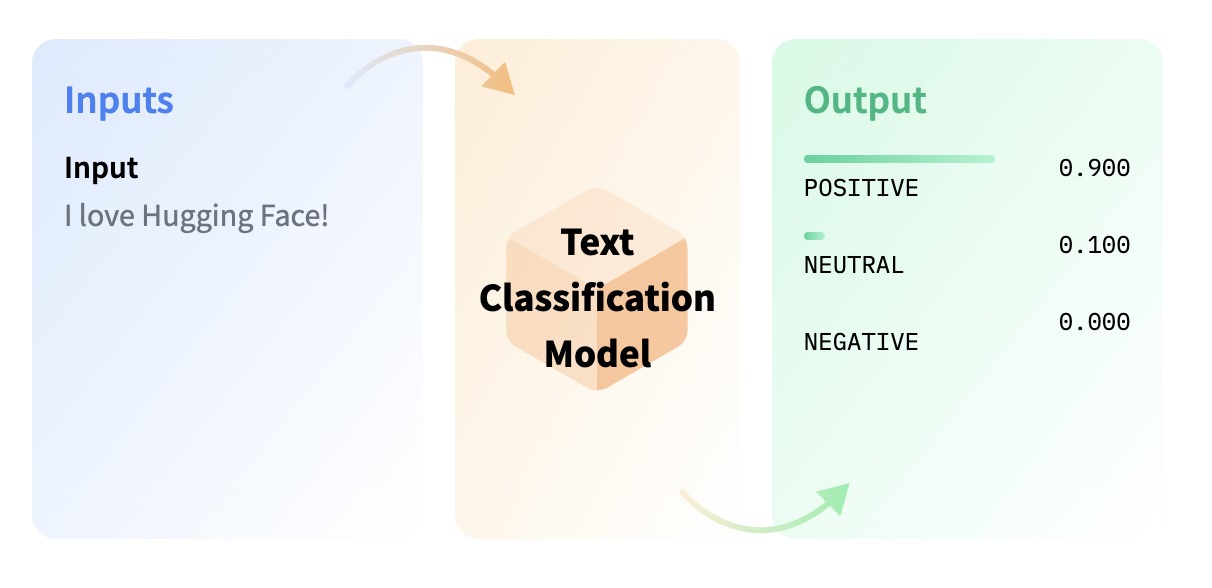Sentiment Analysis
Using Hugging Face 🤗 Pipeline
Python setup
You need Anaconda or Miniconda
Install this virtual environment env-transformers.yml
Intuition

Text classification: assigning a label or class to a given text
Sentiment analysis is the automated process of tagging data according to their sentiment:
- Positive, negative and neutral
Use Cases
Sentiment Analysis on Customer Reviews
You can track the sentiments of your customers from the product reviews using sentiment analysis models.
This can help understand churn and retention by grouping reviews by sentiment, to later analyze the text and make strategic decisions based on this knowledge.
Pipeline
Pipeline example with default model
- Output:
Pipeline example with specific model
Available models
Sentiment analysis models on the Hub
Twitter-roberta-base-sentiment is a roBERTa model trained on ~58M tweets and fine-tuned
Bert-base-multilingual-uncased-sentiment is a model fine-tuned for sentiment analysis on product reviews in six languages: English, Dutch, German, French, Spanish and Italian.
Distilbert-base-uncased-emotion is a model fine-tuned for detecting emotions in texts, including sadness, joy, love, anger, fear and surprise.
Resources
Source: Hugging Face | Jan Kirenz